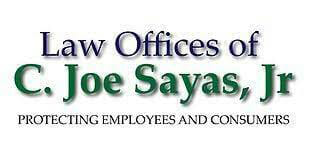Workers’ rights to their tips (Did Amazon pocket its drivers’ tips?)

In 2015, Amazon launched Amazon Flex, where persons can sign up as drivers to deliver products to Amazon customers. Amazon promoted that drivers could earn up to $18-$25 per hour, and could “make more” by making deliveries that are eligible for tips. Amazon promised both customers and tip-eligible drivers that the drivers will receive 100% of customer tips. From 2015 through most of 2016, Amazon paid drivers at least $18 per hour plus 100% of customer tips. During that period, Amazon showed drivers the amount they had been tipped.
But in late 2016, in order to reduce its costs, Amazon implemented what it called “variable base pay” for Amazon Flex drivers. Under this pay scheme, Amazon secretly reduced its own contribution to drivers’ pay based on Amazon’s internal algorithms using data it collected about average tips in the area. Instead of providing the drivers 100% of the tips to the drivers, Amazon often used drivers’ tips to meet Amazon’s minimum base rate.
For example, if Amazon’s variable base rate in the particular location was computed as $12, and the customer left a $6 tip for the driver, then Amazon paid the driver only $12 and used the full customer tip of $6 to reach its promised minimum payment of $18 to the driver. Amazon then displayed driver earnings as the combined total of its base rate and any customer tip, without displaying the amount of any customer tip. Amazon did not disclose to drivers that it was reducing their pay, and reported their earnings only as a single lump sum that did not distinguish between base pay from Amazon and customer tips. Thus, drivers could not tell how much they received in tips or whether Amazon paid its minimum rate fully.
Two and half years later, and after several complaints from drivers and consumers, and critical media reports, the Federal Trade Commission (FTC) began an investigation. It found that Amazon enforced its variable base pay practice without the consent of the drivers and without informing consumers that their tips would no longer be 100% passed on to drivers.
The FTC also found that when Amazon planned the transition to variable base pay, it discussed internally “what level of detail about earnings to show” drivers. Amazon considered different versions of how to show earnings to drivers, ultimately deciding to conceal the distinction between Amazon’s “base rate” and tips.
After the FTC began its investigation, Amazon announced to its current drivers an “Updated Earnings Experience” which was basically a return to its original compensation program that had been in effect from 2015 through late 2016. Amazon again showed the driver’s base rate pay from Amazon separately from any tips that the driver received. Amazon assured its drivers that “For deliveries that give customers the option to tip, you always receive 100% of the tips.”
Even so, Amazon will pay more than $61.7 million to settle the FTC’s charges against it. The $61.7 million represents the full amount that Amazon allegedly withheld from drivers. The FTC will return this amount to the drivers.
Under California law, “No employer or agent shall collect, take, or receive any gratuity or a part thereof that is paid, given to, or left for an employee by a patron, or deduct any amount from wages due an employee on account of a gratuity, or require an employee to credit the amount, or any part thereof, of a gratuity against and as a part of the wages due the employee from the employer.”
A gratuity or tip is the sole property of the employee or employees to whom it was paid, given, or left for. Tip pooling (the gathering of some or all of the tips earned by several employees and then splitting them up among non-serving employees) is generally considered legal, as long as the people participating in the pool are employees and that the employer, the owner, the managers, and certain supervisors do not share in the tip pool.
An employer that permits patrons to pay gratuities by credit card shall pay the employees the full amount of the gratuity that the patron indicated on the credit card slip, without any deductions for any credit card payment processing fees or costs that may be charged to the employer by the credit card company. Payment of gratuities made by patrons using credit cards shall be made to the employees not later than the next regular payday following the date the patron authorized the credit card payment.
The Law Offices of C. Joe Sayas, Jr. welcomes inquiries about this topic. All inquiries are confidential and at no-cost. You can contact the office at (818) 291-0088 or visit www.joesayaslaw.com. [For more than 25 years, C. Joe Sayas, Jr., Esq. successfully recovered wages and other monetary damages for thousands of employees and consumers. He was named Top Labor & Employment Attorney in California by the Daily Journal, consistently selected as Super Lawyer by the Los Angeles Magazine, and is a past Presidential Awardee for Outstanding Filipino Overseas.]
As an Amazon Associate INQUIRER.net will earn from qualifying purchases.

